Slide 7 -2 REACHING GLOBAL MARKETS CHAPTER Lecture


Slide 7-2 REACHING GLOBAL MARKETS CHAPTER Lecture 13_Global (International marketing) Associate professor of Plekhanov REA marketing department Irina I.Skorobogatykh (Ph.D)

Slide 7-5 LECTURE QUESTIONS Explain the effects of economic protectionism and the implications of economic integration for global marketing practices. Understand the importance of environmental factors (cultural, economic, and political) in shaping global marketing efforts.

Slide 7-6 LECTURE QUESTIONS Describe different approaches firms use to enter and compete in global markets. Identify specific challenges marketers face when crafting worldwide marketing programs.

DYNAMICS OF WORLD TRADE Slide 7-8 Decline of Economic Protectionism Protectionism Tariff Quota World Trade Organization (WTO)

Slide 7-9 How protectionism affects world trade

DYNAMICS OF WORLD TRADE Slide 7-10 Rise of Economic Integration European Union (EU) North American Free Trade Agreement (NAFTA) Asian Free Trade Agreements Euro

Slide 7-11 The 25 countries of the European Union in 2004

DYNAMICS OF WORLD TRADE Slide 7-16 A New Reality: Global Competition Among Global Companies for Global Customers Global Competition Global Companies International Firm Multinational Firm Multidomestic Marketing Strategy Transnational Firm Global Marketing Strategy

Slide 7-18 Global companies and marketing strategies

DYNAMICS OF WORLD TRADE Slide 7-20 A New Reality: Global Competition Among Global Companies for Global Customers Global Consumers Emergence of a Networked Global Marketplace

Slide 7-22 1. What is protectionism? A: Protectionism is the practice of shielding one or more industries within a country’s economy from foreign competition, using through the use of tariffs or quotas. Concept Check

Slide 7-23 2. What is the difference between a multidomestic and a global marketing strategy? A: A multidomestic marketing strategy means that multinational firms have as many different product variations, brand names, and advertising programs as countries in which they do business. A global marketing strategy is used by a transnational firm to standardize marketing activities when there are cultural similarities and adapts them when cultures differ. Concept Check

A GLOBAL ENVIRONMENTAL SCAN Slide 7-24 Cultural Diversity Cross-Cultural Analysis Values Cultural Symbols Customs Foreign Corrupt Practices Act Language Back Translation

Slide 7-25 Cultural appreciation

A GLOBAL ENVIRONMENTAL SCAN Slide 7-29 Economic Considerations Economic Infrastructure Consumer Income and Purchasing Power Political Stability Currency Exchange Rates Trade Regulations Political-Regulatory Climate

Slide 7-31 1. Cross-cultural analysis involves the study of _________. Concept Check A: similarities and differences among consumers in two or more nations or societies

Slide 7-32 2. When foreign currencies can buy more U.S. dollars, are U.S. products more or less expensive for a foreign consumer? A: Less expensive. Concept Check

GLOBAL MARKET-ENTRY STRATEGIES Slide 7-33 Exporting Indirect Exporting Direct Exporting Licensing Joint Venture Direct Investment Franchising

Slide 7-34 Alternative global market-entry strategies
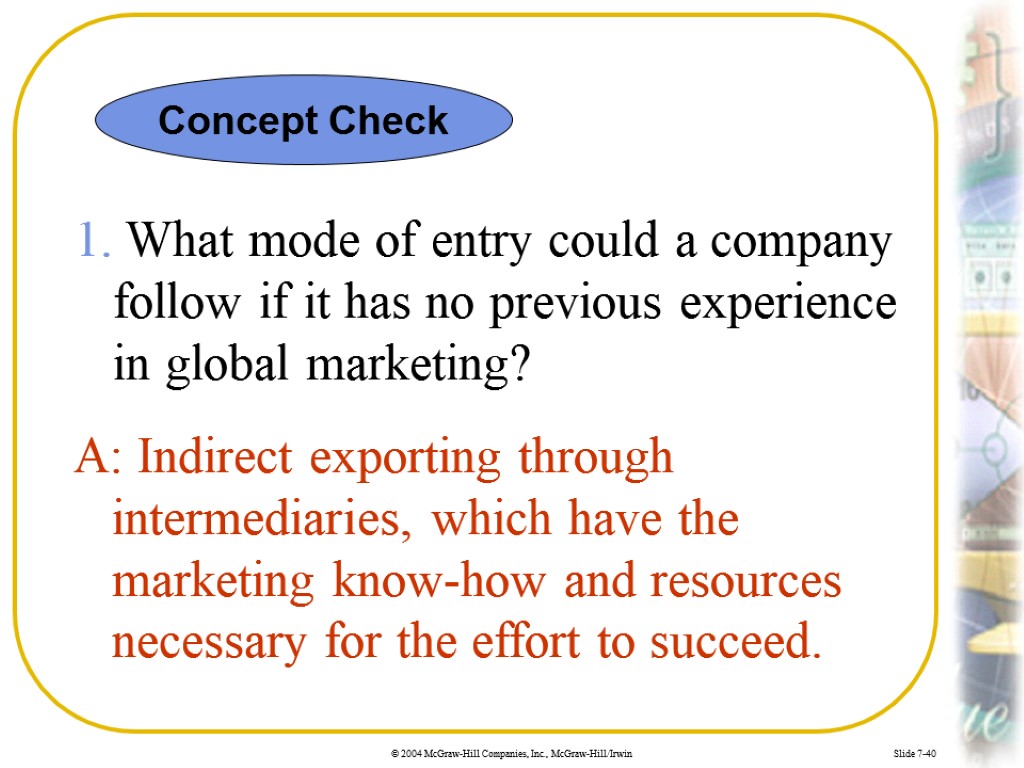
Slide 7-40 1. What mode of entry could a company follow if it has no previous experience in global marketing? A: Indirect exporting through intermediaries, which have the marketing know-how and resources necessary for the effort to succeed. Concept Check

Slide 7-41 2. How does licensing differ from a joint venture? A: Under licensing, a company offers the right to a trademark, patent, or other intellectual property in return for a royalty or fee. Under a joint venture, a foreign company and a local firm invest together to create a local business to share its ownership, control, and profits. Concept Check

CRAFTING A WORLDWIDE MARKETING EFFORT Slide 7-42 Product and Promotion Strategies Product Extension Product Adaptation Product Invention

Slide 7-43 Five product and promotion strategies for global marketing
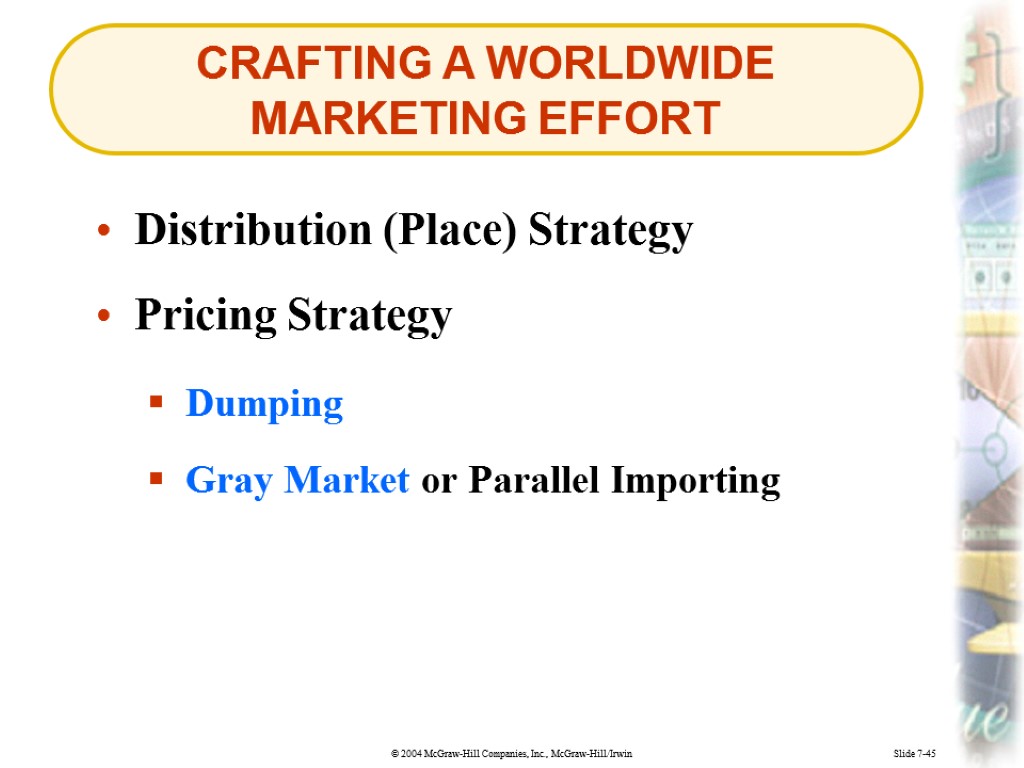
CRAFTING A WORLDWIDE MARKETING EFFORT Slide 7-45 Distribution (Place) Strategy Dumping Gray Market or Parallel Importing Pricing Strategy

Slide 7-46 Channels of distribution in global marketing
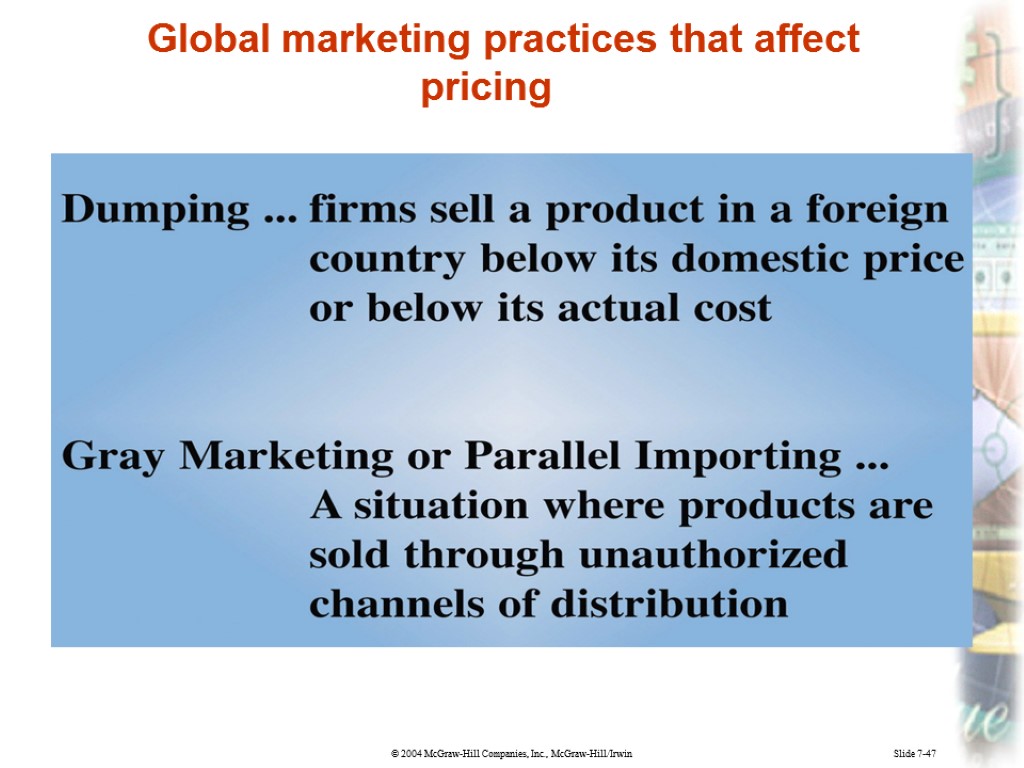
Slide 7-47 Global marketing practices that affect pricing
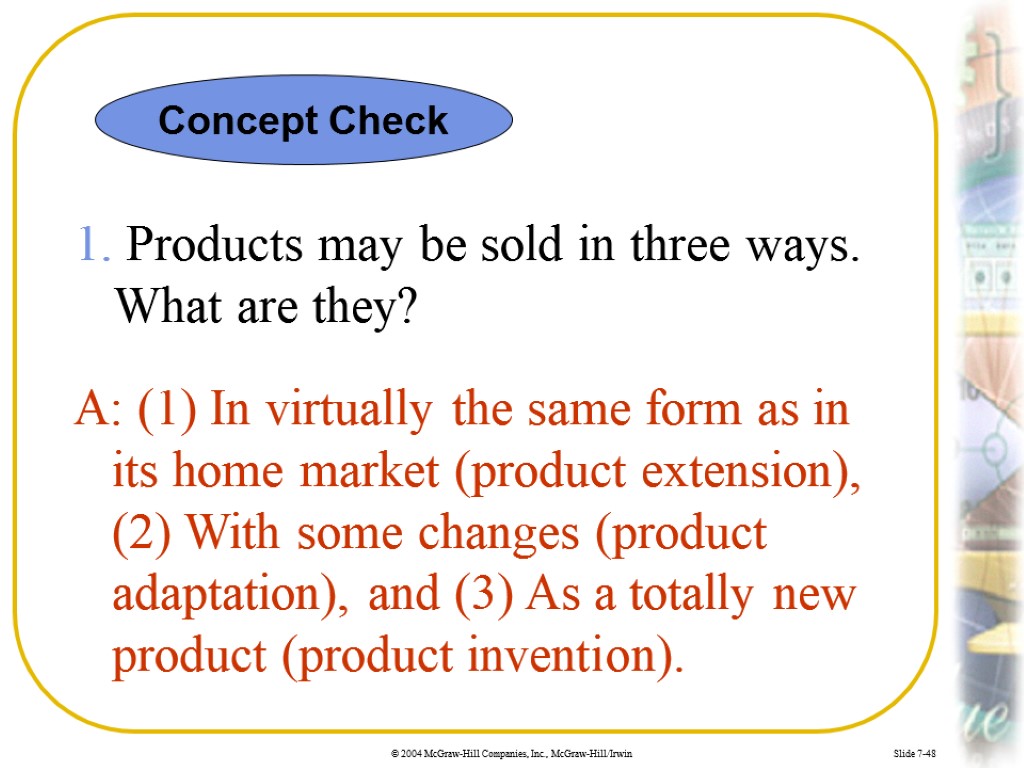
Slide 7-48 1. Products may be sold in three ways. What are they? A: (1) In virtually the same form as in its home market (product extension), (2) With some changes (product adaptation), and (3) As a totally new product (product invention). Concept Check
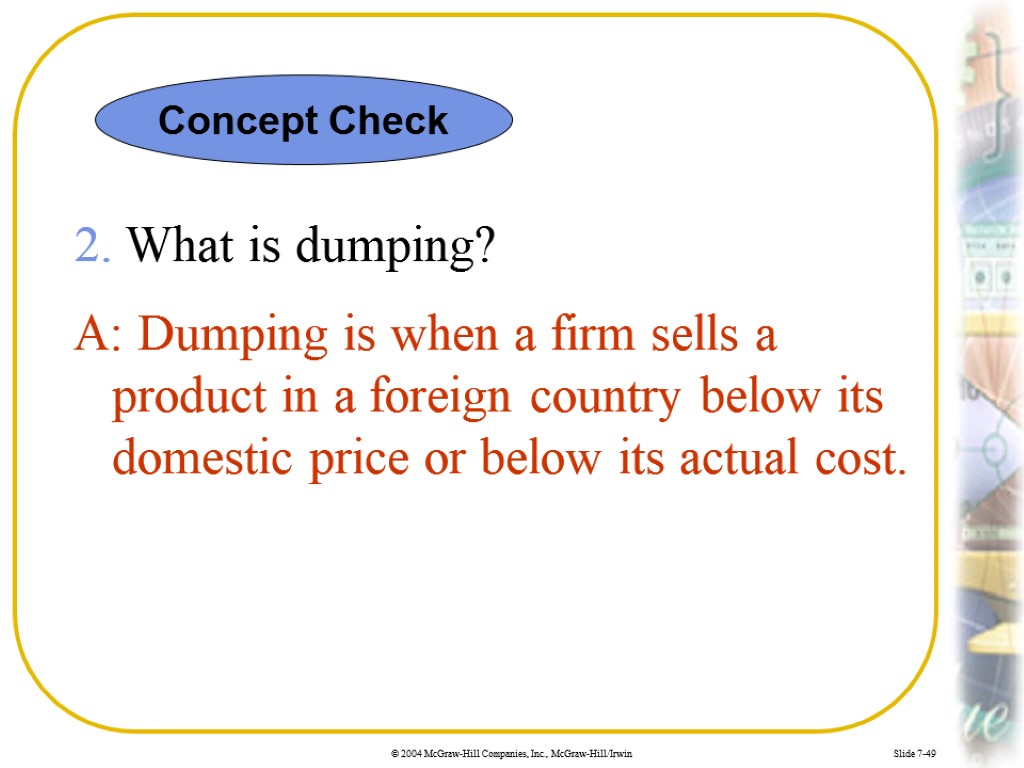
Slide 7-49 2. What is dumping? A: Dumping is when a firm sells a product in a foreign country below its domestic price or below its actual cost. Concept Check
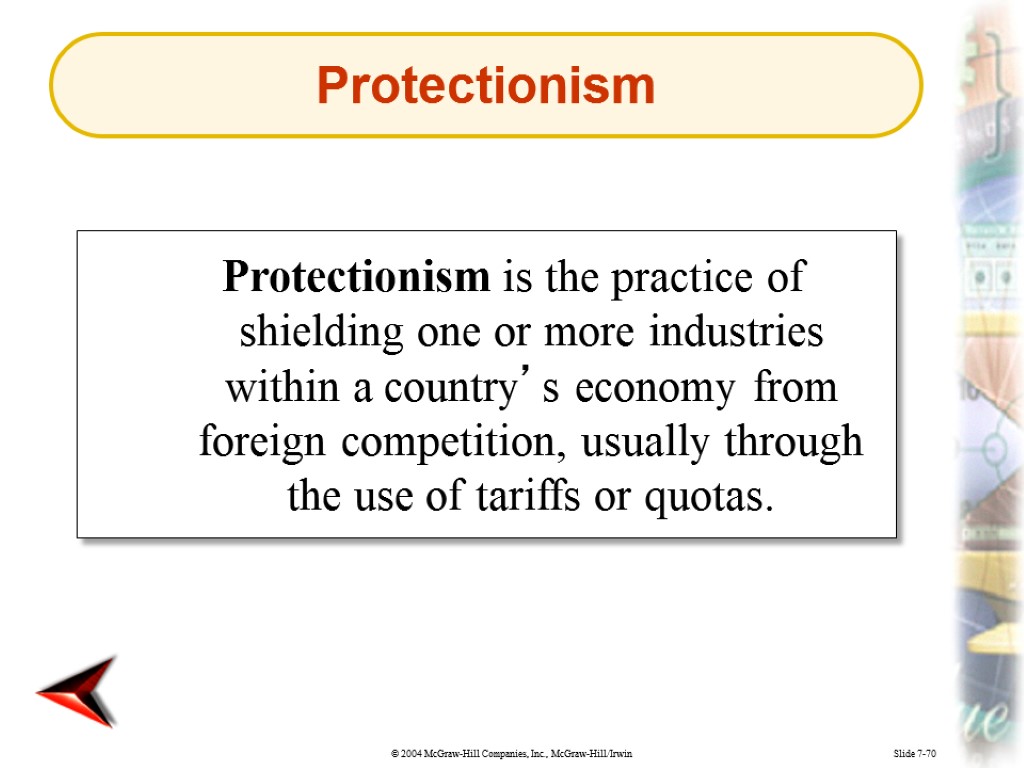
Slide 7-70 Protectionism is the practice of shielding one or more industries within a country’s economy from foreign competition, usually through the use of tariffs or quotas. Protectionism
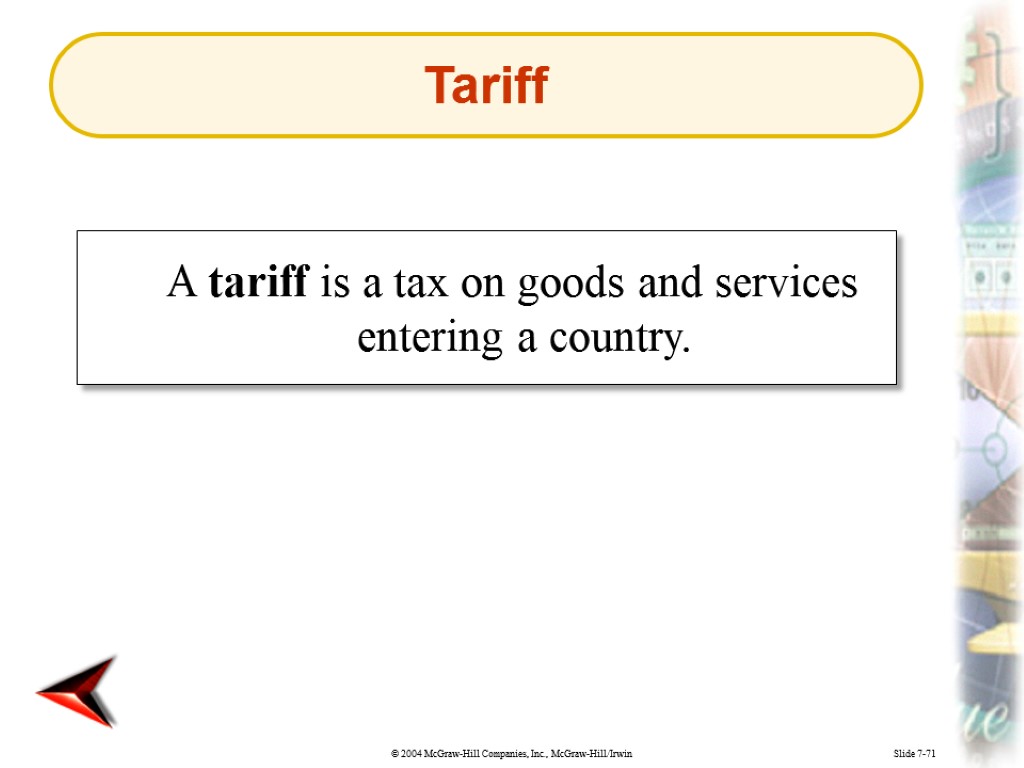
Slide 7-71 A tariff is a tax on goods and services entering a country. Tariff
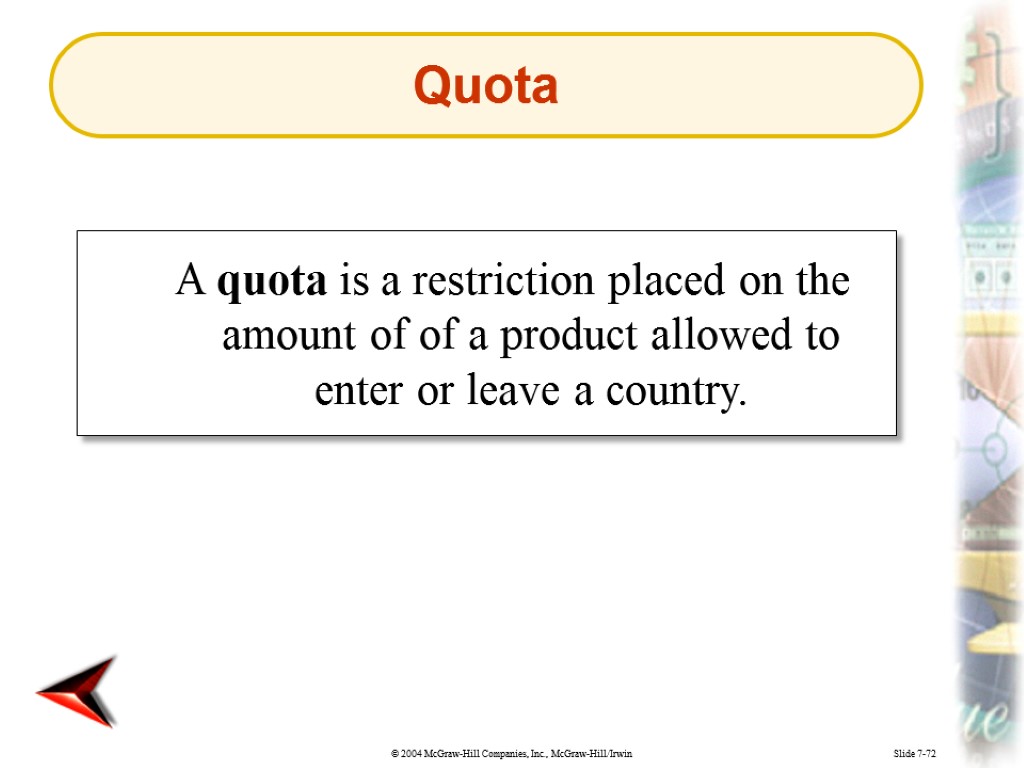
Slide 7-72 A quota is a restriction placed on the amount of of a product allowed to enter or leave a country. Quota
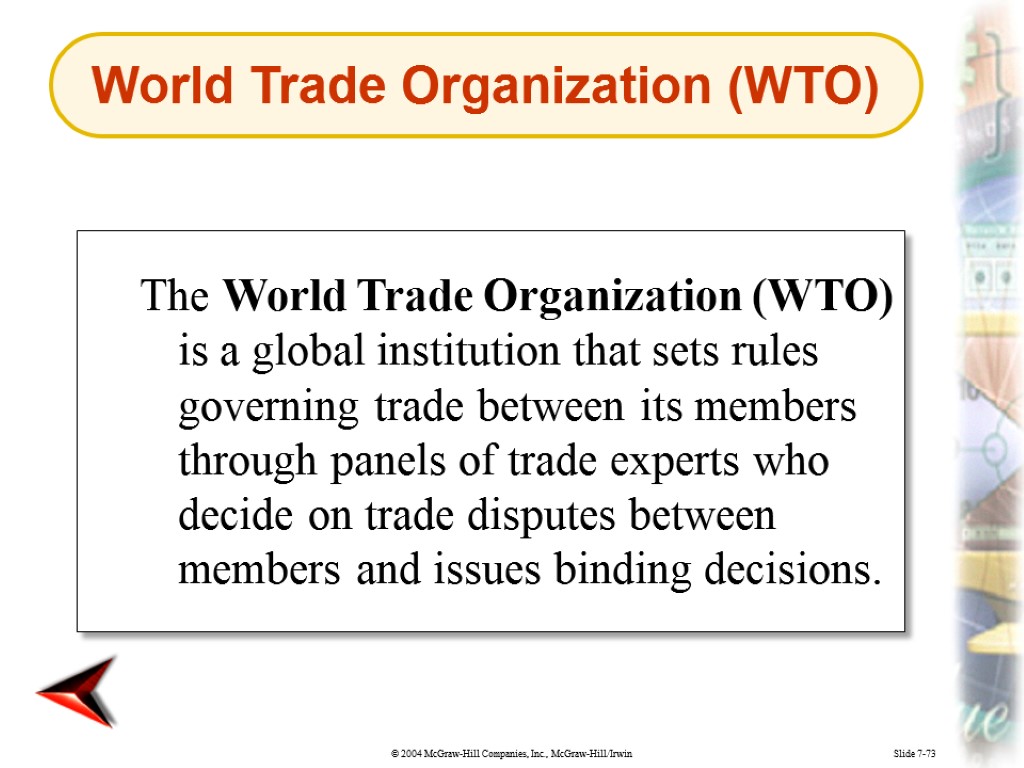
Slide 7-73 The World Trade Organization (WTO) is a global institution that sets rules governing trade between its members through panels of trade experts who decide on trade disputes between members and issues binding decisions. World Trade Organization (WTO)
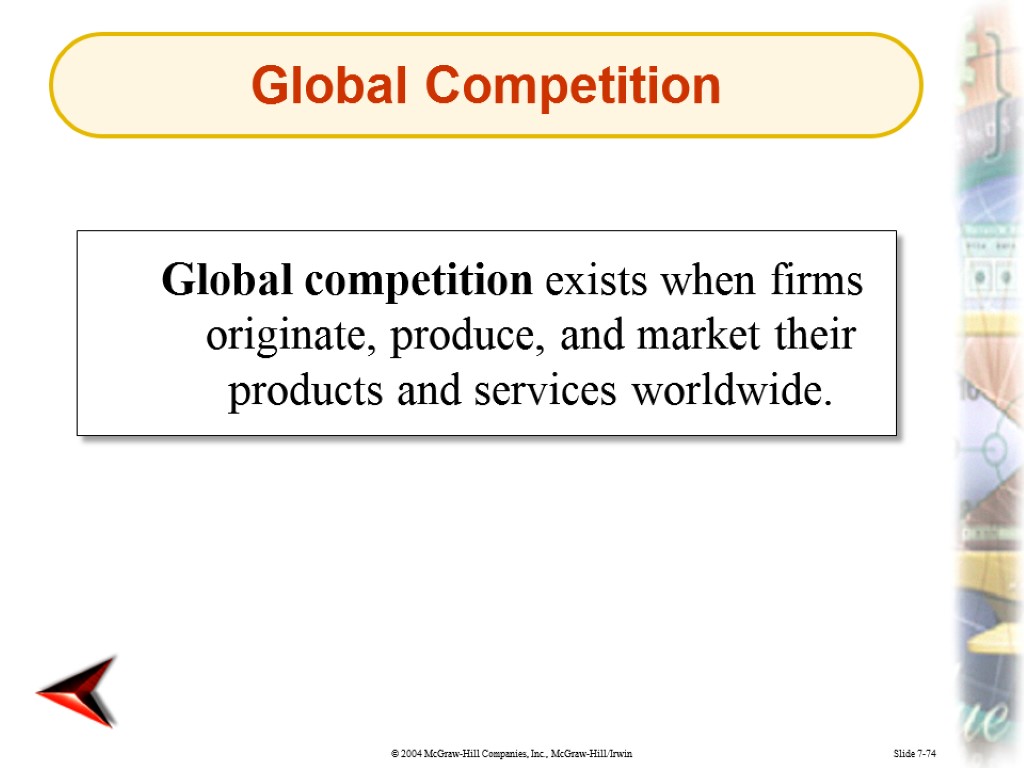
Slide 7-74 Global competition exists when firms originate, produce, and market their products and services worldwide. Global Competition
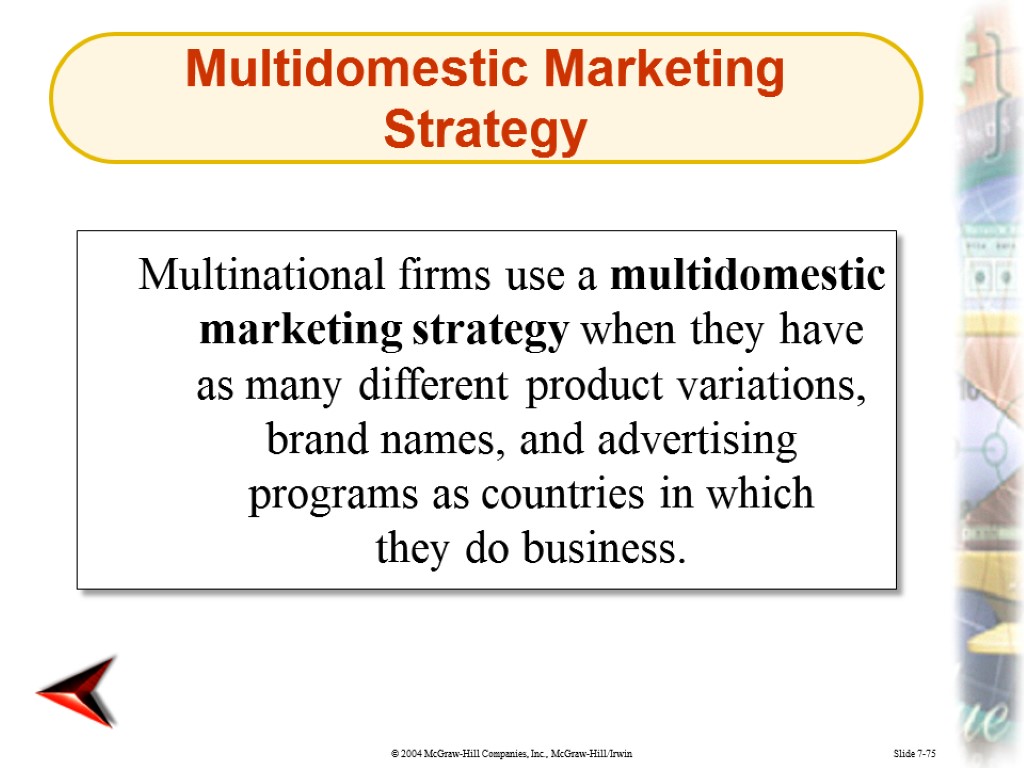
Slide 7-75 Multinational firms use a multidomestic marketing strategy when they have as many different product variations, brand names, and advertising programs as countries in which they do business. Multidomestic Marketing Strategy
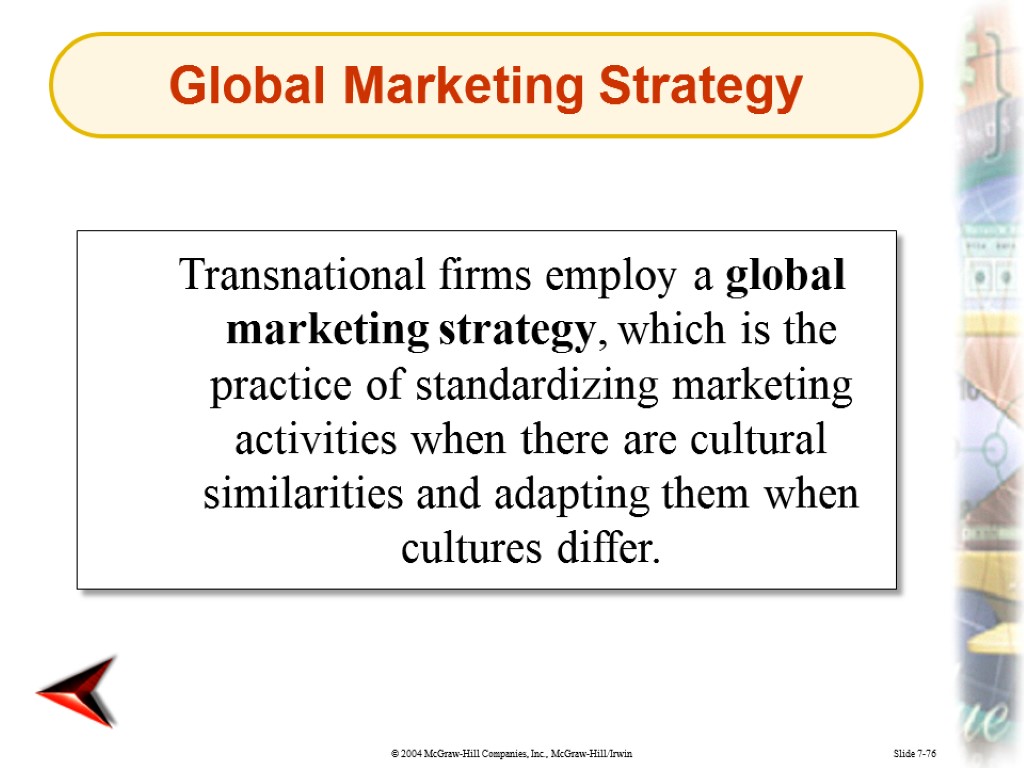
Slide 7-76 Transnational firms employ a global marketing strategy, which is the practice of standardizing marketing activities when there are cultural similarities and adapting them when cultures differ. Global Marketing Strategy
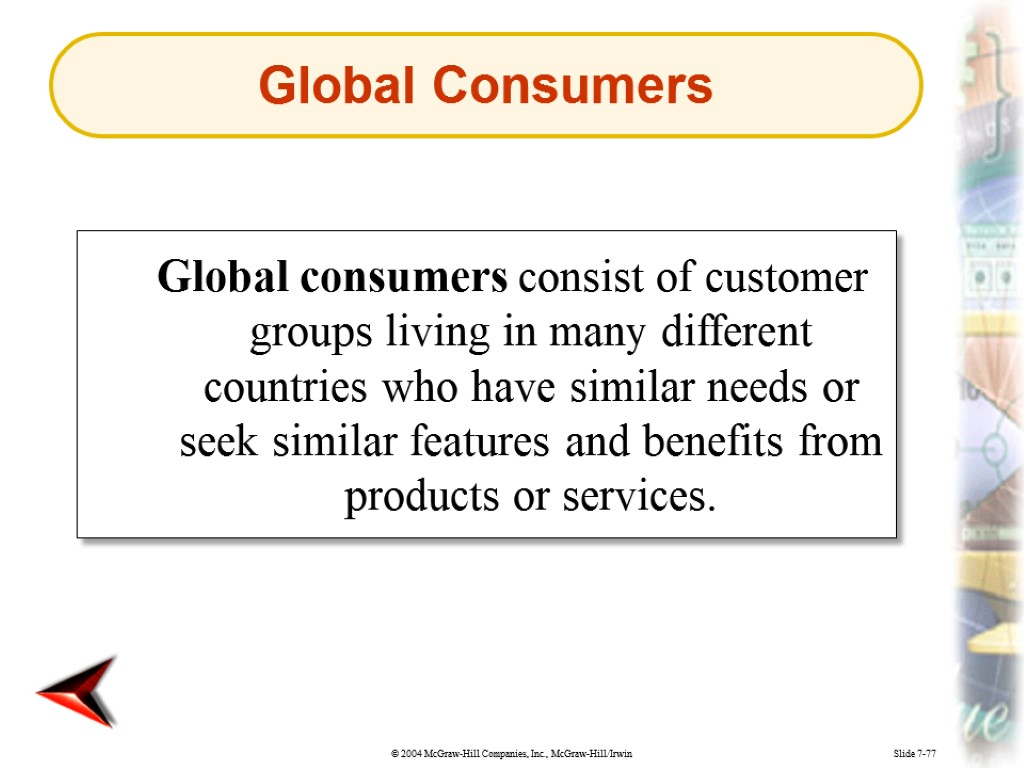
Slide 7-77 Global consumers consist of customer groups living in many different countries who have similar needs or seek similar features and benefits from products or services. Global Consumers
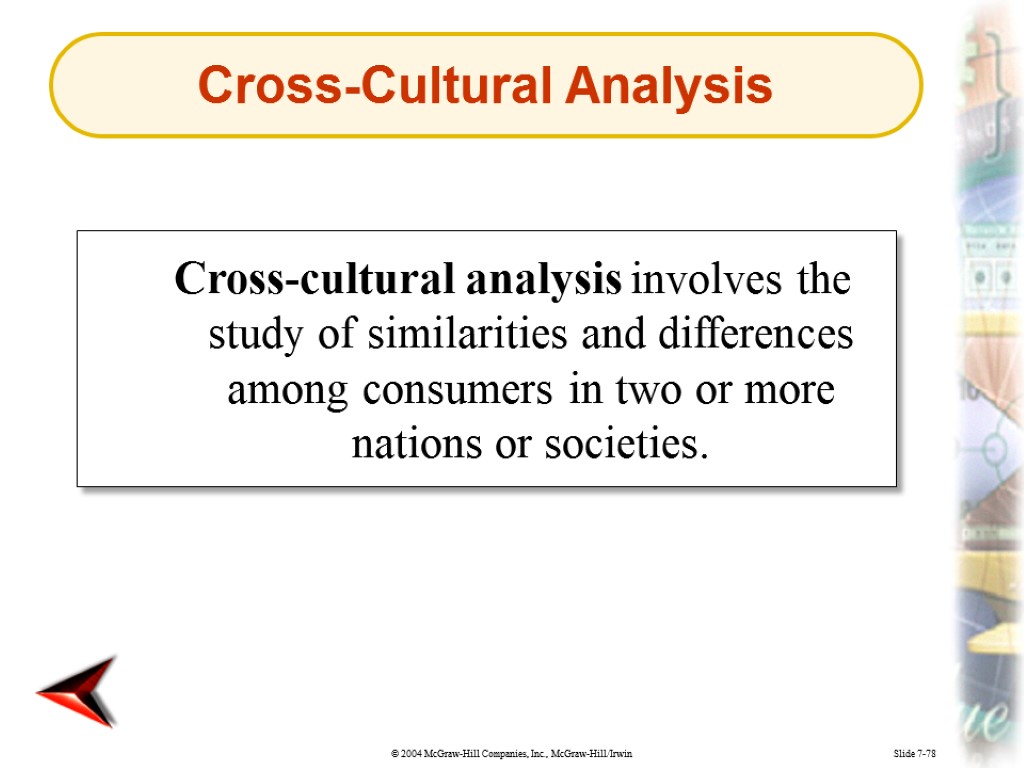
Slide 7-78 Cross-cultural analysis involves the study of similarities and differences among consumers in two or more nations or societies. Cross-Cultural Analysis
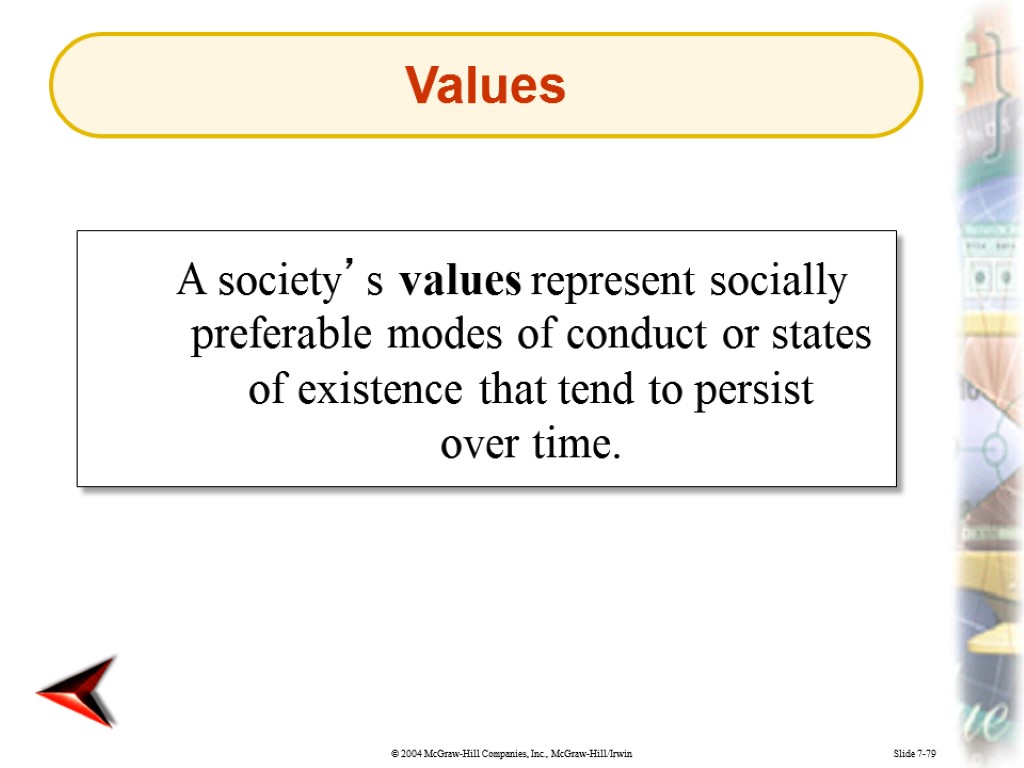
Slide 7-79 A society’s values represent socially preferable modes of conduct or states of existence that tend to persist over time. Values
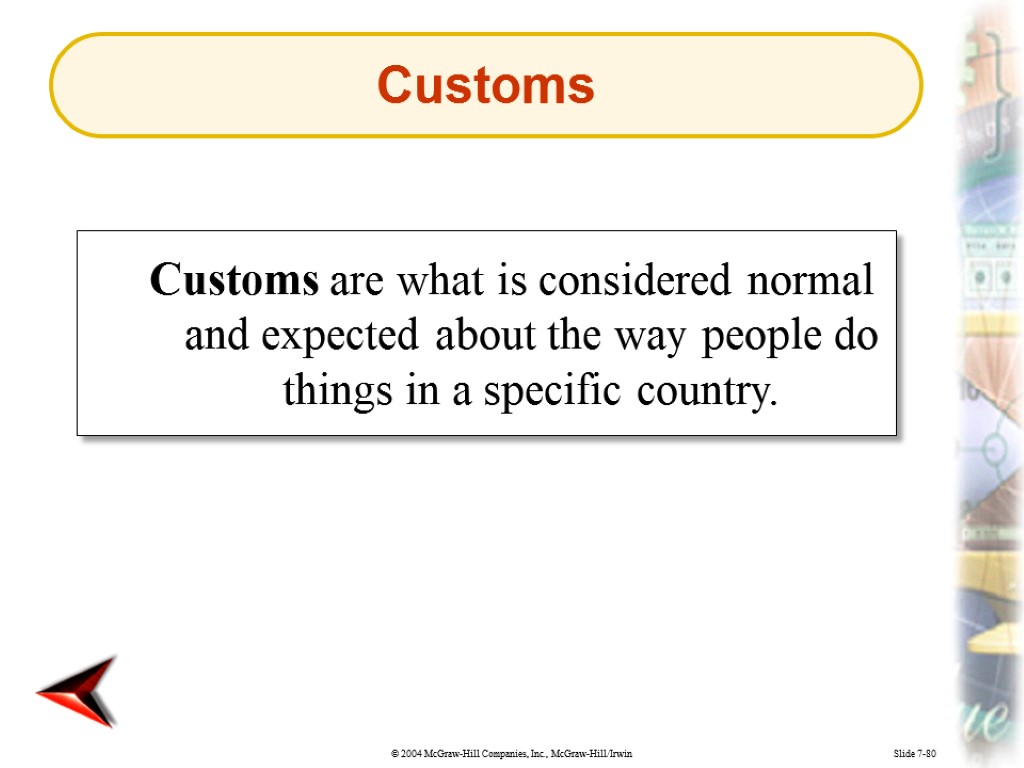
Slide 7-80 Customs are what is considered normal and expected about the way people do things in a specific country. Customs
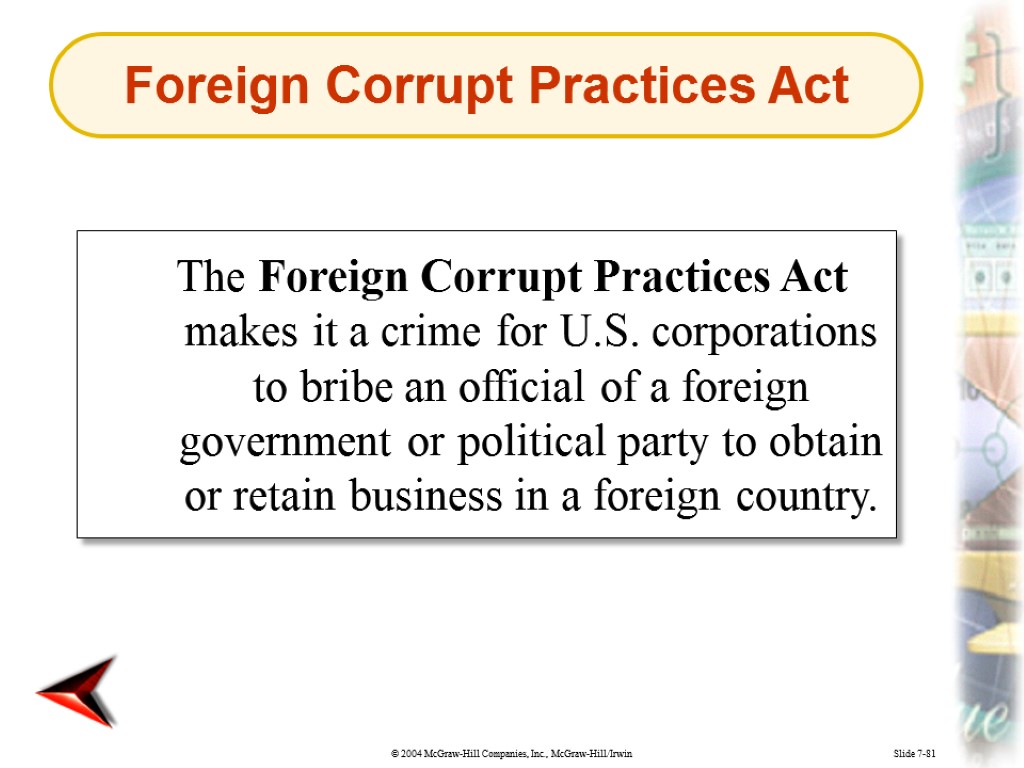
Slide 7-81 The Foreign Corrupt Practices Act makes it a crime for U.S. corporations to bribe an official of a foreign government or political party to obtain or retain business in a foreign country. Foreign Corrupt Practices Act
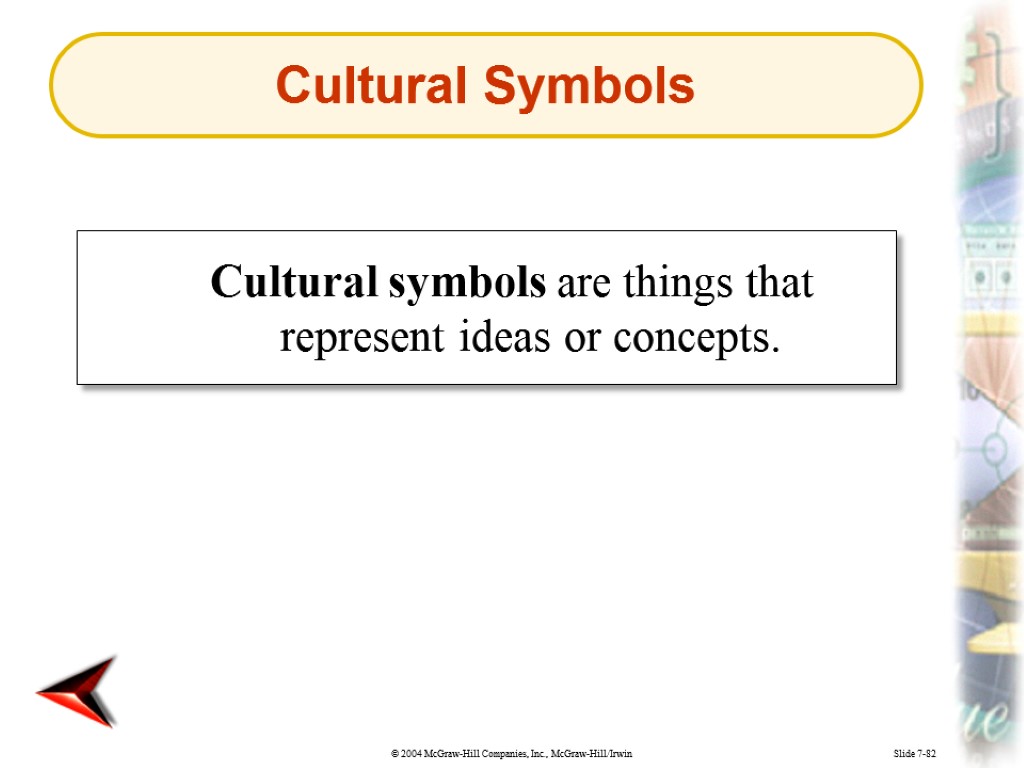
Slide 7-82 Cultural symbols are things that represent ideas or concepts. Cultural Symbols
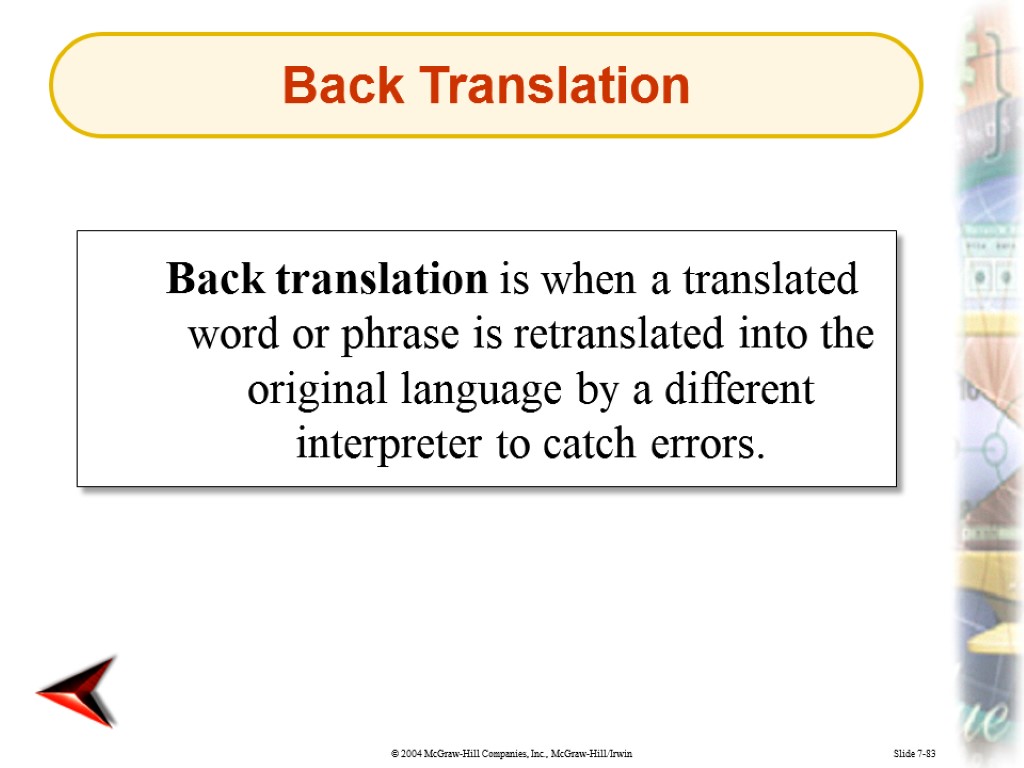
Slide 7-83 Back translation is when a translated word or phrase is retranslated into the original language by a different interpreter to catch errors. Back Translation
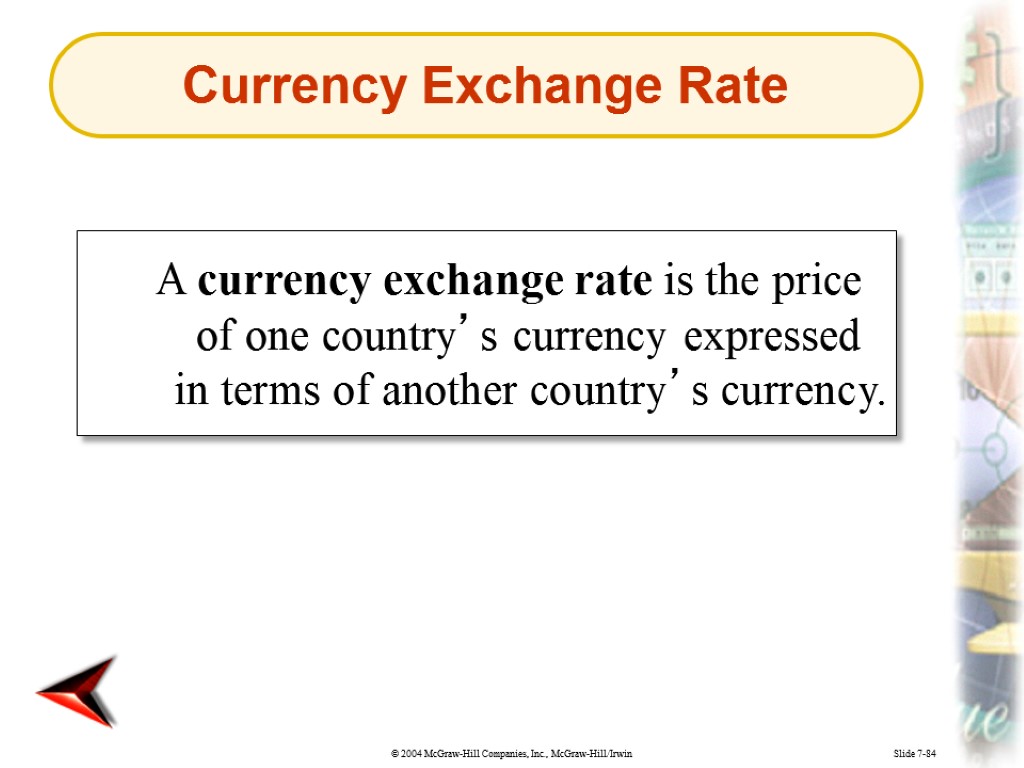
Slide 7-84 A currency exchange rate is the price of one country’s currency expressed in terms of another country’s currency. Currency Exchange Rate
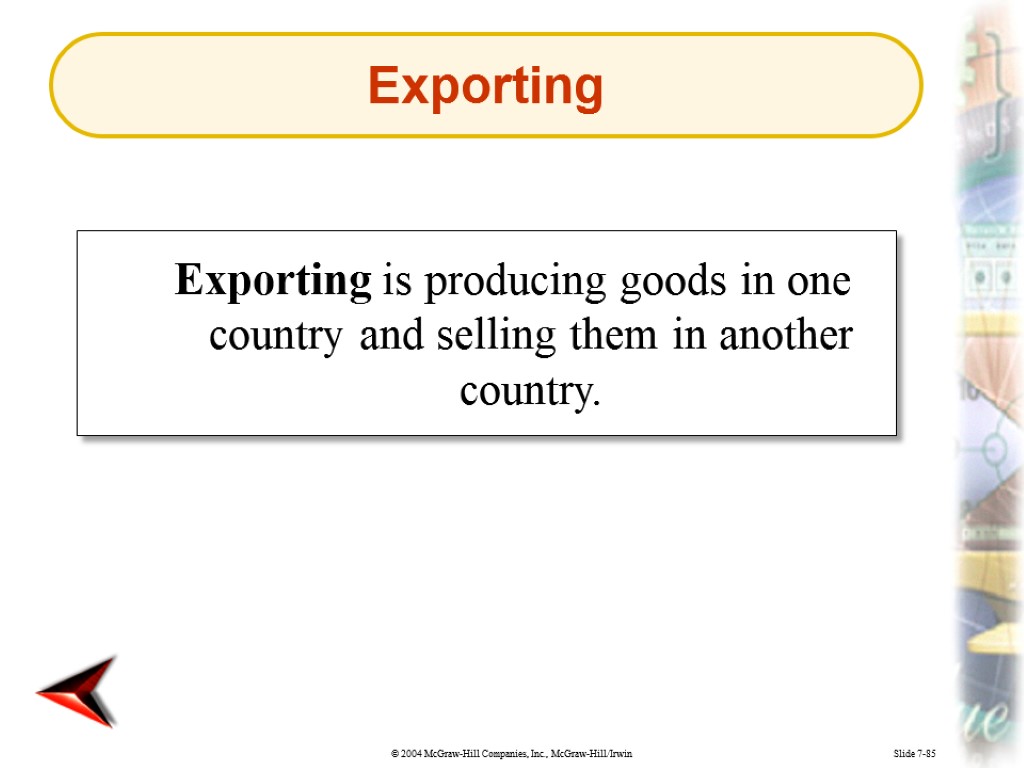
Slide 7-85 Exporting is producing goods in one country and selling them in another country. Exporting
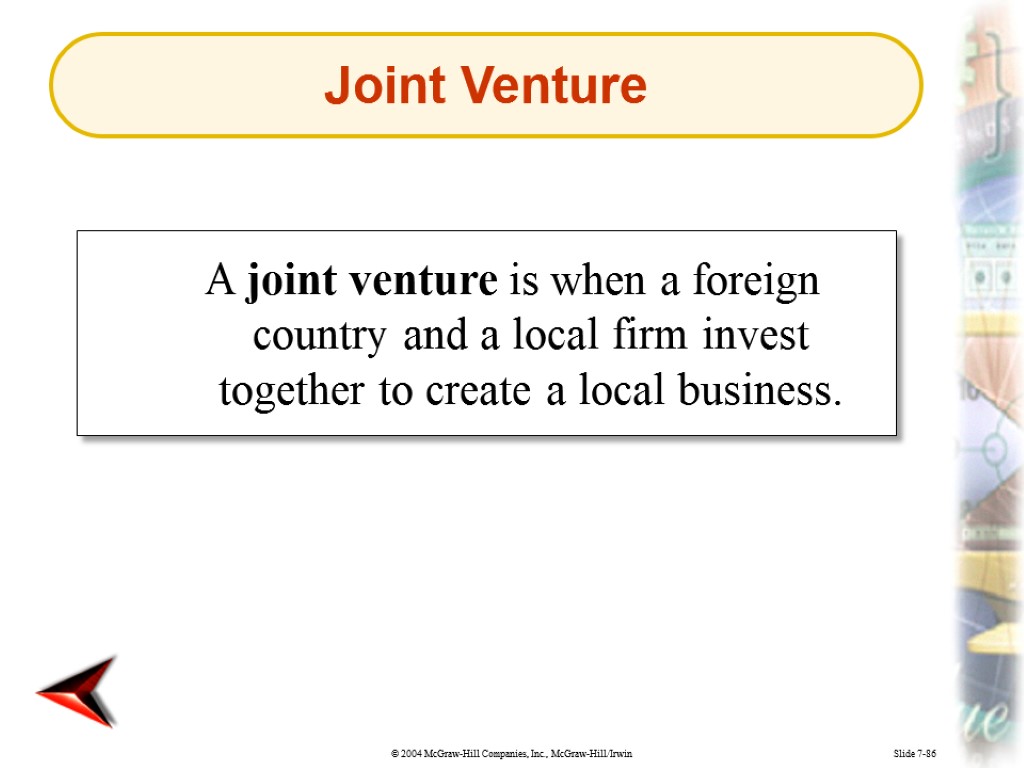
Slide 7-86 A joint venture is when a foreign country and a local firm invest together to create a local business. Joint Venture
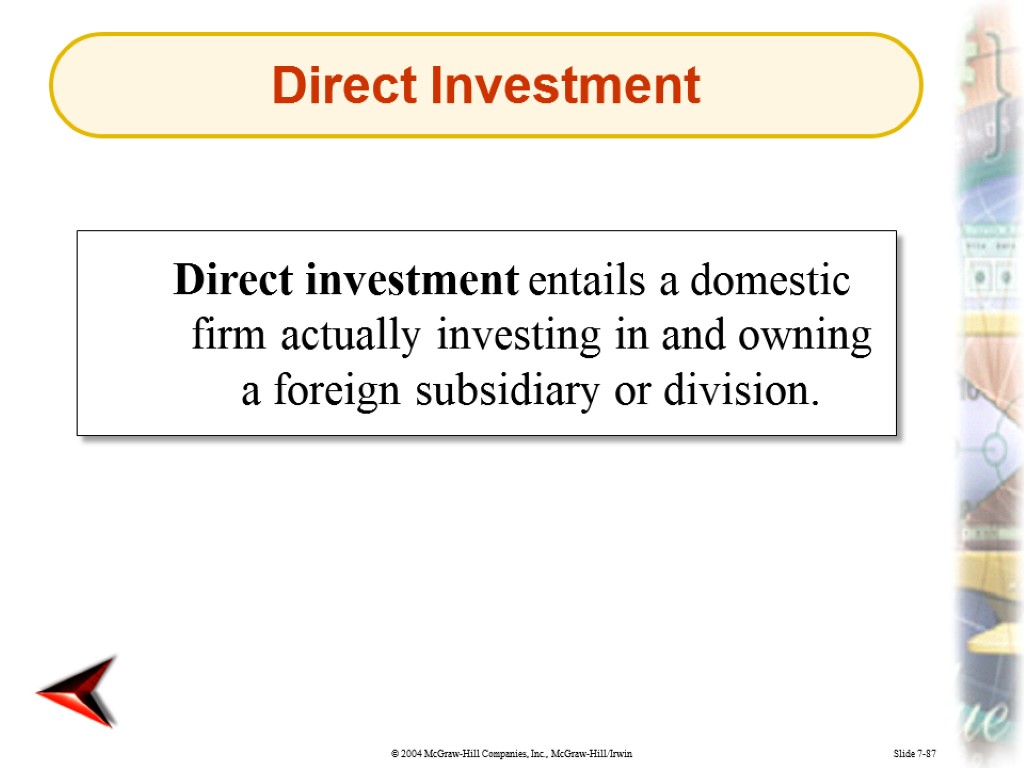
Slide 7-87 Direct investment entails a domestic firm actually investing in and owning a foreign subsidiary or division. Direct Investment
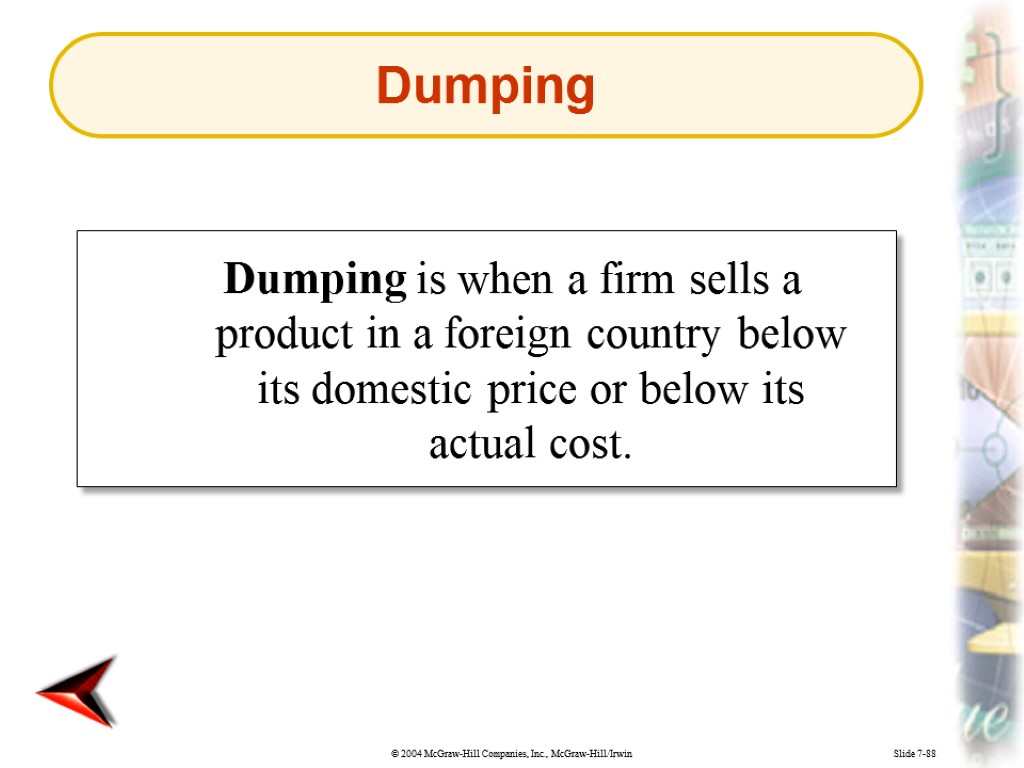
Slide 7-88 Dumping is when a firm sells a product in a foreign country below its domestic price or below its actual cost. Dumping
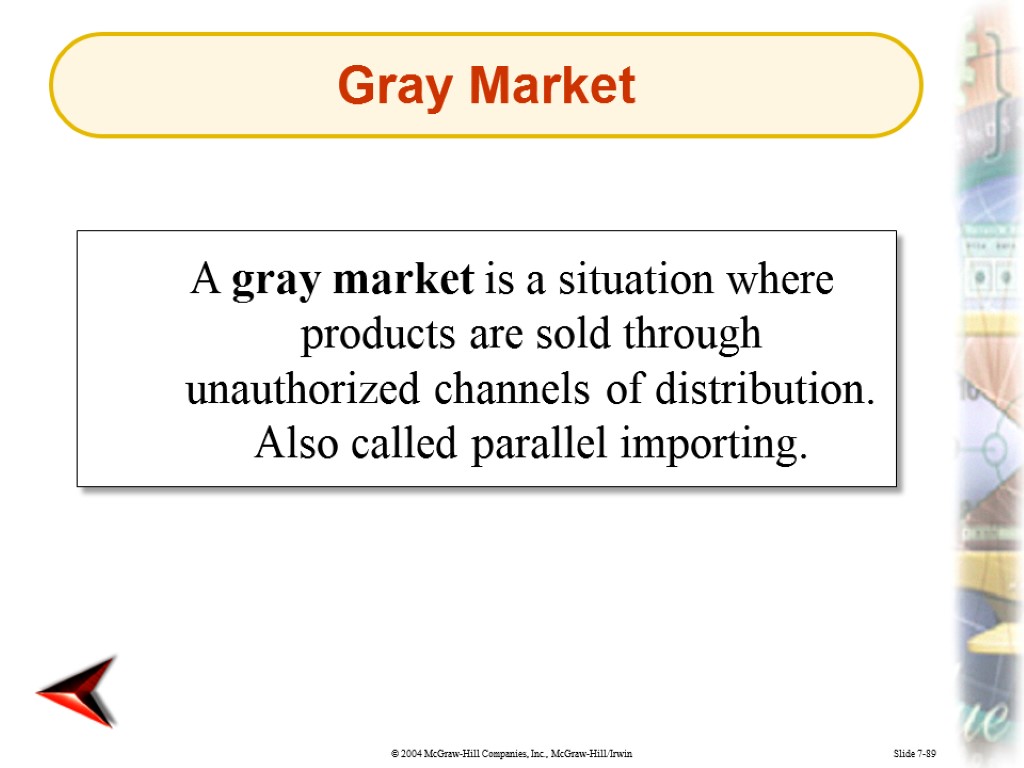
Slide 7-89 A gray market is a situation where products are sold through unauthorized channels of distribution. Also called parallel importing. Gray Market
questions_44-45_-_lecture13.ppt
- Количество слайдов: 48

